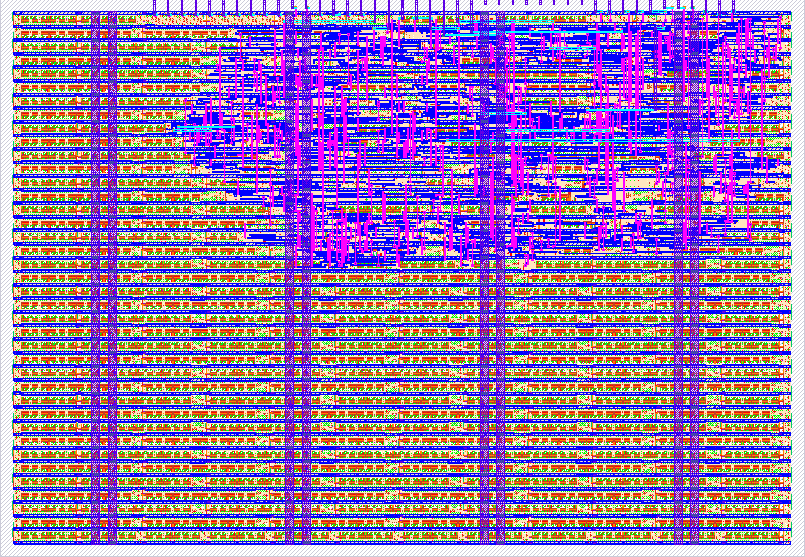489 Audio Transient Shaper
489 : Audio Transient Shaper

- Author: Mark Renker
- Description: Real-time transient shaper: enhances/reduces attack/sustain by envelope modulation
- GitHub repository
- Open in 3D viewer
- Clock: 24000000 Hz
How it works
This transient shaper processes audio signals in real-time by independently controlling the attack (initial transient) and sustain (decay) portions of the signal using dual envelope followers.
Architecture
The design implements three main components:
- Fast Envelope Follower: Tracks rapid changes in the audio signal with a time constant of 0.25 (attack detection)
- Slow Envelope Follower: Tracks gradual changes with a time constant of 0.125 (sustain detection)
- Modulation Stage: Applies independent gain control to attack and sustain components
Signal Flow
- 6-bit audio input is fed to both envelope followers simultaneously
- Fast envelope captures transient peaks for attack enhancement
- Slow envelope tracks sustained signal energy
- Each envelope can be boosted by 50% when enabled via control bits
- Final output combines original signal with envelope-derived gain modulation
Processing Parameters
- Clock frequency: 24 MHz
- Attack time constant: 0.25 (fast response)
- Sustain time constant: 0.125 (slow response)
- Boost amount: 50% (right-shift by 1)
- Bit depth: 6-bit input, 8-bit output
How to test
Input Configuration
The 8-bit input (ui_in) is mapped as follows:
- Bits [5:0]: Audio input (6-bit unsigned, 0-63 range)
- Bit [6]: Sustain amount (0=bypass, 1=boost sustain)
- Bit [7]: Attack amount (0=bypass, 1=boost attack)
Test Procedure
- Passthrough Test: Set
ui_in = 0b00XXXXXX(attack/sustain off) and verify output equals input - Attack Enhancement: Feed an impulse signal (high→low transition) with
ui_in[7]=1to see transient boost - Sustain Control: Apply a constant signal with
ui_in[6]=1to verify sustained level boost - Combined Mode: Enable both bits for maximum dynamic processing
Example Test Vectors
ui_in = 0b00100000 → Passthrough (audio=32, no boost)
ui_in = 0b10100000 → Attack boost enabled (audio=32)
ui_in = 0b01100000 → Sustain boost enabled (audio=32)
ui_in = 0b11111111 → Full boost (audio=63, both enabled)
Clock & Reset
- Apply 24 MHz clock to
clk - Assert
rst_nlow for at least 10 cycles to reset - Set
enahigh to enable processing
External hardware
This design operates entirely in the digital domain and does not require external hardware. For practical audio applications, you would need:
- ADC: To convert analog audio input to 6-bit digital (e.g., parallel flash ADC)
- DAC: To convert 8-bit digital output back to analog audio (e.g., R-2R ladder)
- Anti-aliasing filter: Input low-pass filter for frequencies above ~1 MHz
- Reconstruction filter: Output low-pass filter to smooth the digital-to-analog conversion
Optional but recommended:
- Input level control (potentiometer + voltage divider)
- Output amplifier/buffer for driving speakers or headphones
IO
| # | Input | Output | Bidirectional |
|---|---|---|---|
| 0 | audio_in[0] | audio_out[0] | |
| 1 | audio_in[1] | audio_out[1] | |
| 2 | audio_in[2] | audio_out[2] | |
| 3 | audio_in[3] | audio_out[3] | |
| 4 | audio_in[4] | audio_out[4] | |
| 5 | audio_in[5] | audio_out[5] | |
| 6 | sustain_amt | audio_out[6] | |
| 7 | attack_amt | audio_out[7] |